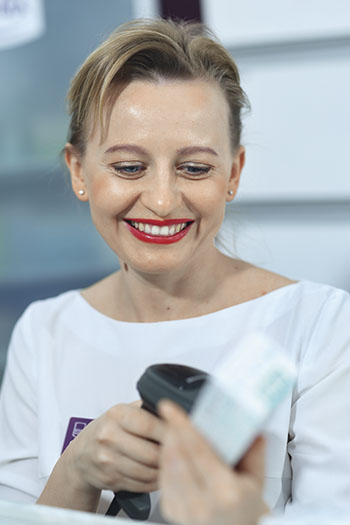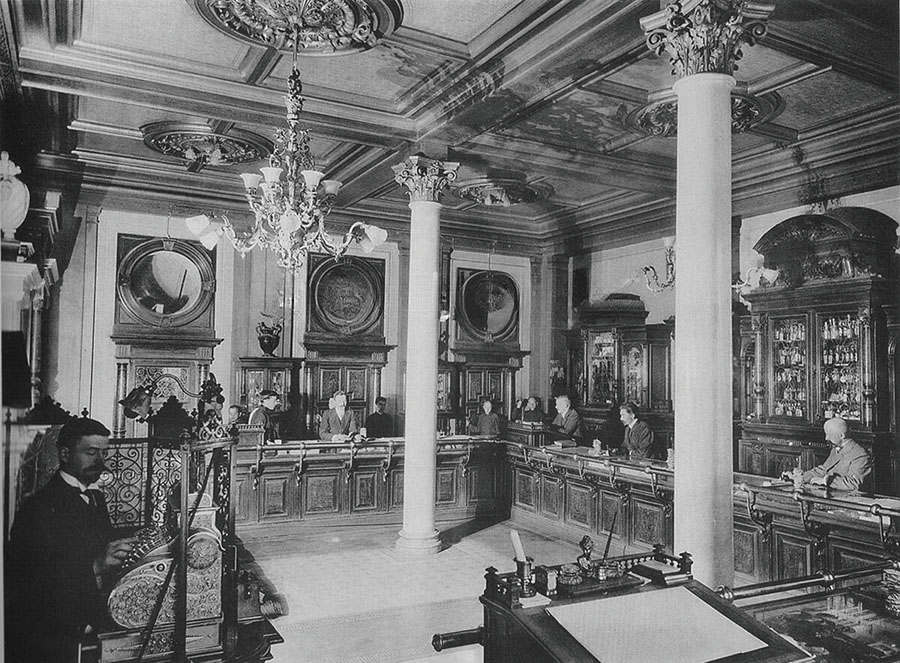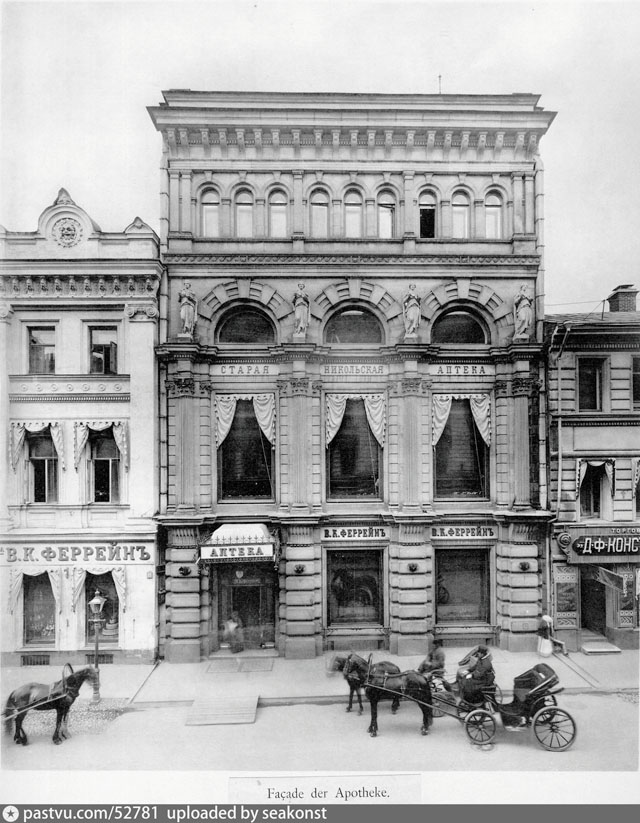This profession dates back to before our era and has always been in demand. Pharmacists were listened to and trusted. If we lived today, for example, in Ancient Egypt and went to an apothecary’s shop complaining of a headache, we would be offered a remedy made of the following ingredients: cancer head, pig teeth, lizard blood, tortoise brain, antelope droppings. All this should be crushed, diluted with water and drink until it becomes easier. And they were drinking! Fortunately, no pharmacist today will prescribe such a potion. What’s the offer? What is its remit today?

Go into the storeroom
In the last half century alone, pharmacy has changed beyond recognition – pharmacies are now found at every turn. They used to look like a doctor’s office: there were no medicines in brightly coloured packages in glass cabinets – everything was strict and modest. Pharmacists made their own mixtures, drops, ointments, suppositories, and injection solutions.
Today, almost nothing is manufactured anywhere – the modern pharmacy looks more like a shop. But the essence of it remained the same: to be there when a person needed a cure.

The word apotheke is Greek. Translated, it means “storehouse”, “storeroom”. And that’s a very accurate definition: when you hold out a prescription or name a medication, the pharmacist goes to the “pantry.” Only a few decades ago, the range of pharmacy products was only 3000 items. Today, there are over 20,000 of them! How to memorise them, and even in Latin, how not to confuse one with the other?
The word apotheke is Greek.Translated, it means “storehouse”, “storeroom”.And that’s a very accurate definition: when you hold out a prescription or name a medication, the pharmacist is off to the “pantry”

– The profession of a pharmacist nowadays is more than just knowing about medicines and dispensing medicines on demand,” says Natalia Makarchuk, Deputy Operations Director of the Unipharma pharmacy chain.
– The modern pharmacist must not only know pharmacology and navigate dosages and analogues, but also be able to offer related products that will help improve the quality of life of the customer. The pharmacist must have an understanding of nutritional and cosmetic medicine, not just selling anything, but helping the individual customer. Certainly, customer centricity comes to the forefront nowadays as competition is very big these days.
What other qualities should a pharmacist possess? When hiring him/her, the pharmacy management first of all pays attention to the following.
– First of all – on education and documents confirming professionalism and skills.
– How attentive and focused the person is – because if a pharmacist sells the wrong drug to a client, there could be irreversible consequences.
– Does the candidate possess good memory, motor and tactile including. The pharmacist must not only remember the names of the medicines and their properties, but also navigate quickly to find the medicine that the customer asks for.
– Analytical skills – these will be useful in recording the arrival and consumption of medicines for which the pharmacist is responsible.
– On responsiveness, tolerance, attention to detail and skills of a psychologist – after all, a pharmacist has to establish contact with the customer.
Pharmacy No. 1
One of the first pharmacies in Russia was that of Vladimir Karlovich Ferrein, a German-born pharmacist.This is Pharmacy No. 1, until recently it operated on Nikolskaya Street in Moscow.Before the revolution, it was the largest in Europe: medicines that used to be brought from abroad were carefully studied, analysed, and analogues created.Special laboratories worked: bacteriological, chemical.Food, soil, water analyses were done.In the halls of the apothecary stood gilded vases, oak carved cabinets, candelabras and marble statues.There was even a fountain that spurted jets scented with French perfume.Stuffed crocodiles and rhinoceros horns were hung from the ceiling as a source of healing powders.Rich and poor alike came here for medicine.The newspapers called it the Czar’s Pharmacy, like the Czar’s Cannon and the Czar’s Bell.Vladimir Karlovich Ferrein believed that the best ingredient for making good medicines was bear fat.And he had a live bear in his pharmacy.Advertising his medicines on bear fat, he ordered to take the leaper every day to the city fountain on Lubyanka Square for a watering hole.The people cheered and hooted at this, but then still went to the pharmacy with interest.After the bear’s death, its stuffed animal was installed on the first floor of the pharmacy.


Is that what the doctor ordered for you?
From an experienced pharmacist, you will definitely hear this question as soon as you ask for a medication but do not present a prescription.
Some pharmacy visitors believe that a pharmacist is just an ordinary salesperson who works in the medical field and therefore wears a white coat. Others, on the other hand, mistake the pharmacist for a doctor and demand medical advice from the pharmacist. What’s it really like?

Yes, a pharmacist is a person who works in the medical field. But this profession cannot be compared with the profession of a doctor: a pharmacist is not engaged in the treatment of patients, his duties include tasks related to the reception, accounting, storage and sale of medicines, medical devices, instruments. By the way, this distinction has been observed since very long ago: in 1224, German King Frederick II first issued a decree, according to which doctors were forbidden to make and sell medicines, and pharmacists – to treat people.
Back in 1224, the German king Frederick II first issued a decree that forbade doctors to make and sell medicines and pharmacists to treat people
– Very often people try to replace a trip to the doctor with a trip to the pharmacy,” continues Natalia Makarchuk. – But they forget that a pharmacist should not diagnose a problem based on the descriptBack in 1224, the German king Frederick II first issued a decree that forbade doctors to make and sell medicines and pharmacists to treat peopleion of the problem and prescribe a drug. He can adjust the prescribed treatment, select related products, but no more.
For example, if a client comes in with a diagnosis from a doctor, the pharmacist will offer them a list of medicines that will help with the problem. But if the customer has self-diagnosed, the pharmacist may unwittingly do harm. It is therefore extremely dangerous to replace a doctor’s appointment with a pharmacy consultation: you cannot ask a pharmacy worker to do something he or she is not trained to do, and the pharmacist could be held liable for this, up to and including criminal liability.
What a pharmacist can do
– Advise customers within the scope of over-the-counter dispensing. For example, if a patient asks for something for a headache, the pharmacist should tell them about over-the-counter painkillers in the range.
– Conduct a rapid diagnosis – for example, if necessary, to measure blood pressure (tonometers are now almost in every pharmacy) – and convince the person to go to the doctor.
– If the pharmacy does not have the medicine you need, explain what analogues are available.
The pharmacist is not authorised to
– Diagnose.
– Prescribe medications.
– Impose one or another drug – the choice is always left to the buyer.
To study to be a pharmacist
People of the older generation remember: in the 1990s, doctors often went to work in pharmaceuticals, as their salaries were higher than those of doctors. Despite the fact that the profession of pharmacist was honourable, there were few universities in the country where you could get a quality education.Now the situation has changed radically.
– Today, former medical workers and doctors are very rare among pharmacists,” says Natalia Makarchuk. – And this is not surprising, as pharmacy training requires a separate education.
Today, pharmacists are trained by the leading universities of the country. In the capital there are Moscow State University, RNRMU (Russian National Research Medical University), RUCT (Russian University of Chemical Technology), and Sechenov University. There are also universities in St. Petersburg, Novosibirsk, Kazan, Omsk, Samara and other Russian cities.

What’s the job?
– The pharmacist will be able to dispense medicines, keep records of medicines and advise customers on the range.
– The Provider will be able to manage pharmacies, assess the quality of drugs, and prepare prescription medications. In addition to working in pharmacy, he will be able to do research or work in manufacturing.
– A pharmacologist is involved in the study of medicines and the development of new drugs.
He has the authority to make prescriptions for patients, and health care providers often consult with him about medications to find the most effective treatment.
Text: Tamara Virkunen
Photo: Denis Kuznetsov

